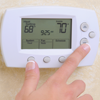Companies everywhere are taking the initiative to “go green” and adopt better practices to save energy and benefit the environment – even your local grocery chain. Check out these chains and their plans to be more conscious about conserving energy and preserving natural habitats.
Publix
 Publix Food and Pharmacy has devised a plan to focus on energy conservation, reduce waste, recycle, and conserve water. Beginning at the root with the chain’s associates, Publix is encouraging all employees to create environmentally responsible habits both at work and at home.
Publix Food and Pharmacy has devised a plan to focus on energy conservation, reduce waste, recycle, and conserve water. Beginning at the root with the chain’s associates, Publix is encouraging all employees to create environmentally responsible habits both at work and at home.
Publix has saved over one billion kilowatt hours, which is equal to 760,000 tons of greenhouse gas through lighting and refrigeration improvements. Companywide, Publix has reduced electricity usage by 9.6 percent. The chain is also working with Florida Solar Energy Center to introduce photovoltaic systems into retail operations.
Kroger
 In an attempt to make more environmentally safe decisions, Kroger has committed to minimizing waste at all of its locations.
In an attempt to make more environmentally safe decisions, Kroger has committed to minimizing waste at all of its locations.
Many of its newer stores are developed with multiple energy-efficient features. They’ve implemented LED lighting, variable speed drives, anti-sweat heat control, and distributed refrigeration systems. They have also taken on the “zero waste” initiative through recycling, donating to food banks, and reducing packaging. Kroger also saved 16 million gallons of water in 2015 with water conservation techniques such as recirculation.
Harris Teeter
 Harris Teeter prides itself on “balancing business practices with its environmental responsibilities”. The chain also encourages its suppliers to explore the benefits and eventually incorporate “green” practices as well.
Harris Teeter prides itself on “balancing business practices with its environmental responsibilities”. The chain also encourages its suppliers to explore the benefits and eventually incorporate “green” practices as well.
As a part of the GreenChill program, they have implemented the use of environmentally friendly refrigerators. Not only does this conserve energy, but it saves the chain money as well. Harris Teeter’s produce bags are 100 percent biodegradable and the paper grocery bags are produced from 100 percent recycled paper as a part of their paper reduction and anti-waste plan.
Walmart
 Walmart, one of the largest grocery/retail stores in America, has committed to multiple programs that promote preserving the environment.
Walmart, one of the largest grocery/retail stores in America, has committed to multiple programs that promote preserving the environment.
With the Zero-Waste-to-Landfill program, 81 percent of the materials are being diverted from landfills. Walmart has also committed to finding cleaner and more affordable energy for all of its locations. Not only has the company itself taken on more responsibilities to “go green”, but they have also helped their suppliers make more environmentally conscious decisions so that customers can trust in the brands they sell.
While these are only a handful of the grocery stores making efforts to “go green”, many stores across the country and around the world have begun programs to become more environmentally friendly. Take a look around your local grocery store: what have they done to conserve energy and reduce waste? Think of ways you can become a part of their program and take the pledge to become environmentally responsible and “go green” as well!






 The
The 
 Technology is constantly evolving and has been a huge enabler of promoting energy efficiency. You can now reduce your electric bill with updated household appliances that lower energy consumption.
Technology is constantly evolving and has been a huge enabler of promoting energy efficiency. You can now reduce your electric bill with updated household appliances that lower energy consumption.